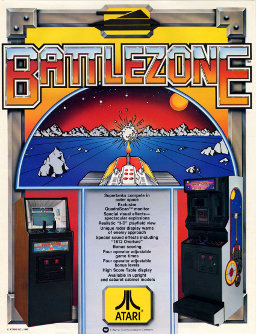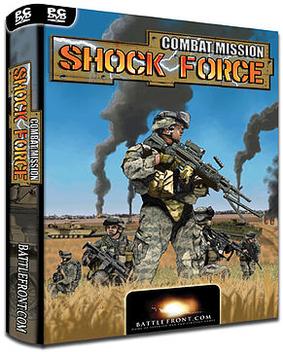
A platformer is a sub-genre of action video games in which the core objective is to move the player character between points in an environment. Platform games are characterized by levels with uneven terrain and suspended platforms of varying height that require jumping and climbing to traverse. Other acrobatic maneuvers may factor into the gameplay, such as swinging from vines or grappling hooks, jumping off walls, gliding through the air, or bouncing from springboards or trampolines.
Real-time strategy (RTS) is a subgenre of strategy video games that does not progress incrementally in turns, but allow all players to play simultaneously, in "real time". By contrast, in turn-based strategy (TBS) games, players take turns to play. The term "real-time strategy" was coined by Brett Sperry to market Dune II in the early 1990s.

In 3D computer graphics, a voxel represents a value on a regular grid in three-dimensional space. As with pixels in a 2D bitmap, voxels themselves do not typically have their position explicitly encoded with their values. Instead, rendering systems infer the position of a voxel based upon its position relative to other voxels.

Battlezone is a first-person shooter tank combat game released for arcades in November 1980 by Atari, Inc. The player controls a tank which is attacked by other tanks and missiles. Using a small radar scanner along with the terrain window, the player can locate enemies and obstacles around them in the barren landscape. Its innovative use of 3D graphics made it a huge hit, with approximately 15,000 cabinets sold.
2.5D perspective refers to gameplay or movement in a video game or virtual reality environment that is restricted to a two-dimensional (2D) plane with little or no access to a third dimension in a space that otherwise appears to be three-dimensional and is often simulated and rendered in a 3D digital environment.

Blitzkrieg is a real-time tactics video game based on the events of World War II and is the first title in the Blitzkrieg series. The game allows players to assume the role of commanding officer during the battles of World War II that occurred in Europe and North Africa. Each country has its respective historically correct military units. Similar to the Sudden Strike games, Blitzkrieg focuses on battles rather than real-time strategy aspects like base building.
A first-person shooter engine is a video game engine specialized for simulating 3D environments for use in a first-person shooter video game. First-person refers to the view where the players see the world from the eyes of their characters. Shooter refers to games which revolve primarily around wielding firearms and killing other entities in the game world, either non-player characters or other players.

Sudden Strike is a series of real-time tactics video games set during World War II. The series is developed by Fireglow based in Russia and published by CDV software of Germany and has been re-published by ZOOM-Platform.com. The player selects a faction and gains control of many varied units such as infantry, tanks and artillery. The games focus primarily on tactics, eschewing traditional real-time strategy resource gathering and base development.
Strike is a series of video games created by Mike Posehn, John Patrick Manley and Tony Barnes released between 1991 and 1997 by Electronic Arts for a number of video game systems. The games are multi-directional shooters viewed from an overhead or top-down perspective. The first three games in the series were 2D and used isometric sprites to give the illusion of 3D depth since real-time 3D polygon rendering wasn't possible at the time. The series made the jump to real-time 3D graphics with the release of Soviet Strike which used a brand new engine built for fifth generation gaming consoles.

Combat Mission: Shock Force is a computer wargame by American studio Battlefront.com in the Combat Mission series of games that covers a fictional United States invasion of Syria, focusing on U.S. Stryker brigades. It was released in 2007, marking the debut of the CMX2 game engine, the second generation of Combat Mission games.

Blitzkrieg 2 is a real-time tactics computer game based on the events of World War II, the game is an evolution of its predecessor Blitzkrieg and is the second title in the Blitzkrieg. The game takes place in North Africa, the Pacific and Europe, and features the 6 different factions portrayed in the game that fought in their battle respective grounds during the war.

Astro Battle is a science fiction multidirectional shooter developed and published by American studio Lava Lord Games for Microsoft Windows and Linux. The gameplay focuses on players designing star fighters to fight against other players' ships in an overhead melee.

3D computer graphics, sometimes called CGI, 3-D-CGI or three-dimensional computer graphics, are graphics that use a three-dimensional representation of geometric data that is stored in the computer for the purposes of performing calculations and rendering digital images, usually 2D images but sometimes 3D images. The resulting images may be stored for viewing later or displayed in real time.

Cuban Missile Crisis: The Aftermath, also known as The Day After: Fight for Promised Land and known in Russia as Caribbean Crisis, is a real-time tactics computer game developed by Russian developer G5 Software and published by 1C Company in Russia, Black Bean Games in Europe and Strategy First in North America. It was made using Nival Interactive's Enigma engine and is similar to Blitzkrieg.

Isometric video game graphics are graphics employed in video games and pixel art that use a parallel projection, but which angle the viewpoint to reveal facets of the environment that would otherwise not be visible from a top-down perspective or side view, thereby producing a three-dimensional (3D) effect. Despite the name, isometric computer graphics are not necessarily truly isometric—i.e., the x, y, and z axes are not necessarily oriented 120° to each other. Instead, a variety of angles are used, with dimetric projection and a 2:1 pixel ratio being the most common. The terms "3/4 perspective", "3/4 view", "2.5D", and "pseudo 3D" are also sometimes used, although these terms can bear slightly different meanings in other contexts.

The Dreamland Chronicles: Freedom Ridge is an unreleased video game for Microsoft Windows and PlayStation 2 by Mythos Games. Developed by the team which produced X-COM: UFO Defense, including lead designer Julian Gollop, the game was planned to be "a remake of the first X-COM with 3D graphics," as the first of four games planned in the new series. Cancelled in 2001, the unfinished game was later bought and partially turned into UFO: Aftermath by Altar Interactive, which was in turn itself followed by two sequels. Some elements of the game are also present in Gollop's own Phoenix Point.
A variety of computer graphic techniques have been used to display video game content throughout the history of video games. The predominance of individual techniques have evolved over time, primarily due to hardware advances and restrictions such as the processing power of central or graphics processing units.

Combat Mission is the name of a series of computer wargames simulating tactical battles. The series has progressed through two distinct game engines. The original game engine, referred to as 'CMx1' by the developer, Battlefront.com, powered a trio of games set in the Second World War. Combat Mission: Shock Force was released in July 2007 as the debut of the 'CMx2' game engine. The Combat Mission games are a mixture of turn-based gameplay and simultaneous real-time execution. The game environment is fully three-dimensional, with a "Wego" style of play wherein each player enters their orders into the computer simultaneously during pauses in the action, and then are powerless to intervene during the action phase. More familiar turn-based games use an "I-go/You-go" system of play.

Nival is a video game developer and publisher founded by Sergey Orlovskiy in 1996. It is headquartered in Limassol, Cyprus.
Men of War is a real-time tactics video game franchise, based mainly in World War II.













